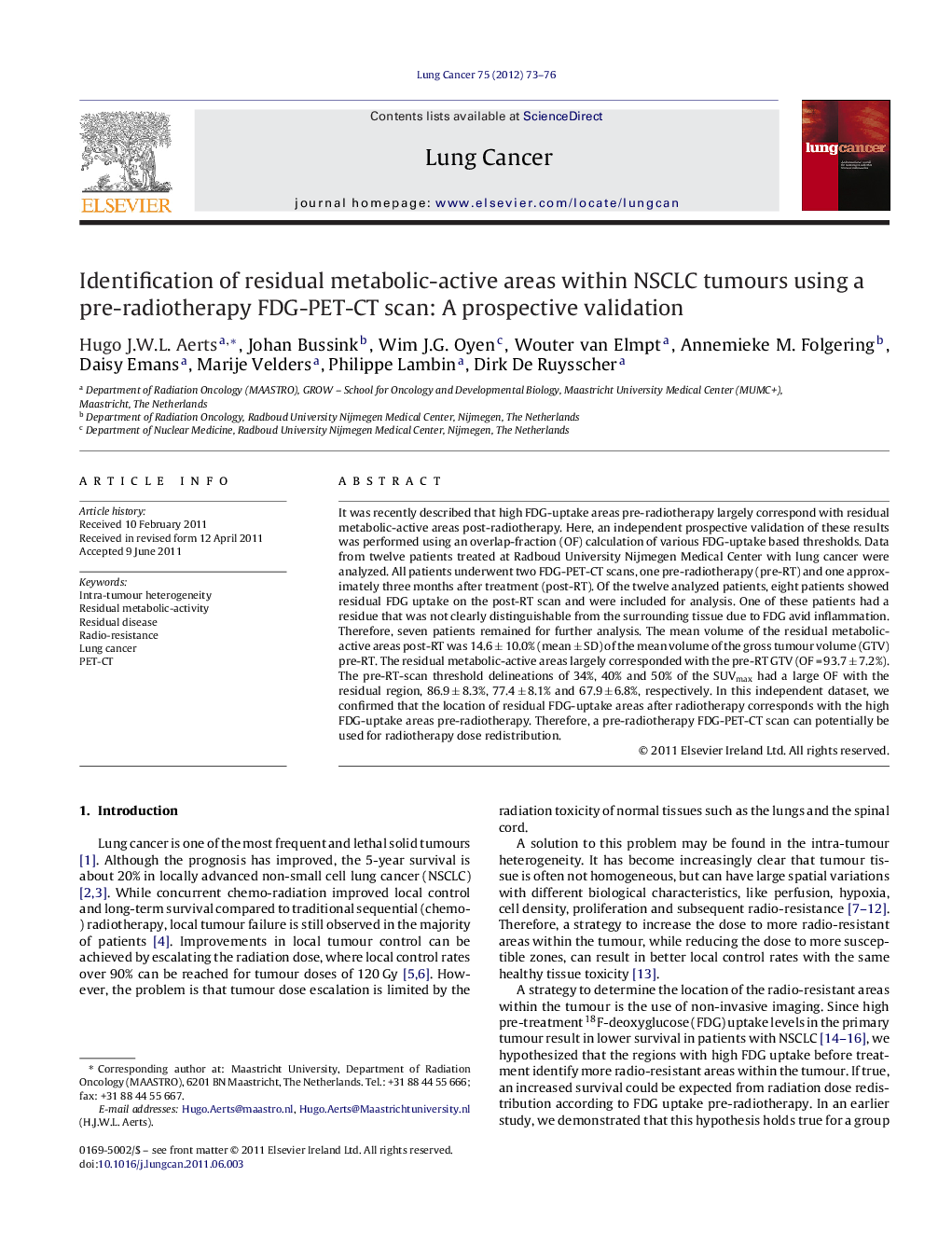| Article ID | Journal | Published Year | Pages | File Type |
|---|---|---|---|---|
| 10911508 | Lung Cancer | 2012 | 4 Pages |
Abstract
It was recently described that high FDG-uptake areas pre-radiotherapy largely correspond with residual metabolic-active areas post-radiotherapy. Here, an independent prospective validation of these results was performed using an overlap-fraction (OF) calculation of various FDG-uptake based thresholds. Data from twelve patients treated at Radboud University Nijmegen Medical Center with lung cancer were analyzed. All patients underwent two FDG-PET-CT scans, one pre-radiotherapy (pre-RT) and one approximately three months after treatment (post-RT). Of the twelve analyzed patients, eight patients showed residual FDG uptake on the post-RT scan and were included for analysis. One of these patients had a residue that was not clearly distinguishable from the surrounding tissue due to FDG avid inflammation. Therefore, seven patients remained for further analysis. The mean volume of the residual metabolic-active areas post-RT was 14.6 ± 10.0% (mean ± SD) of the mean volume of the gross tumour volume (GTV) pre-RT. The residual metabolic-active areas largely corresponded with the pre-RT GTV (OF = 93.7 ± 7.2%). The pre-RT-scan threshold delineations of 34%, 40% and 50% of the SUVmax had a large OF with the residual region, 86.9 ± 8.3%, 77.4 ± 8.1% and 67.9 ± 6.8%, respectively. In this independent dataset, we confirmed that the location of residual FDG-uptake areas after radiotherapy corresponds with the high FDG-uptake areas pre-radiotherapy. Therefore, a pre-radiotherapy FDG-PET-CT scan can potentially be used for radiotherapy dose redistribution.
Related Topics
Life Sciences
Biochemistry, Genetics and Molecular Biology
Cancer Research
Authors
Hugo J.W.L. Aerts, Johan Bussink, Wim J.G. Oyen, Wouter van Elmpt, Annemieke M. Folgering, Daisy Emans, Marije Velders, Philippe Lambin, Dirk De Ruysscher,
